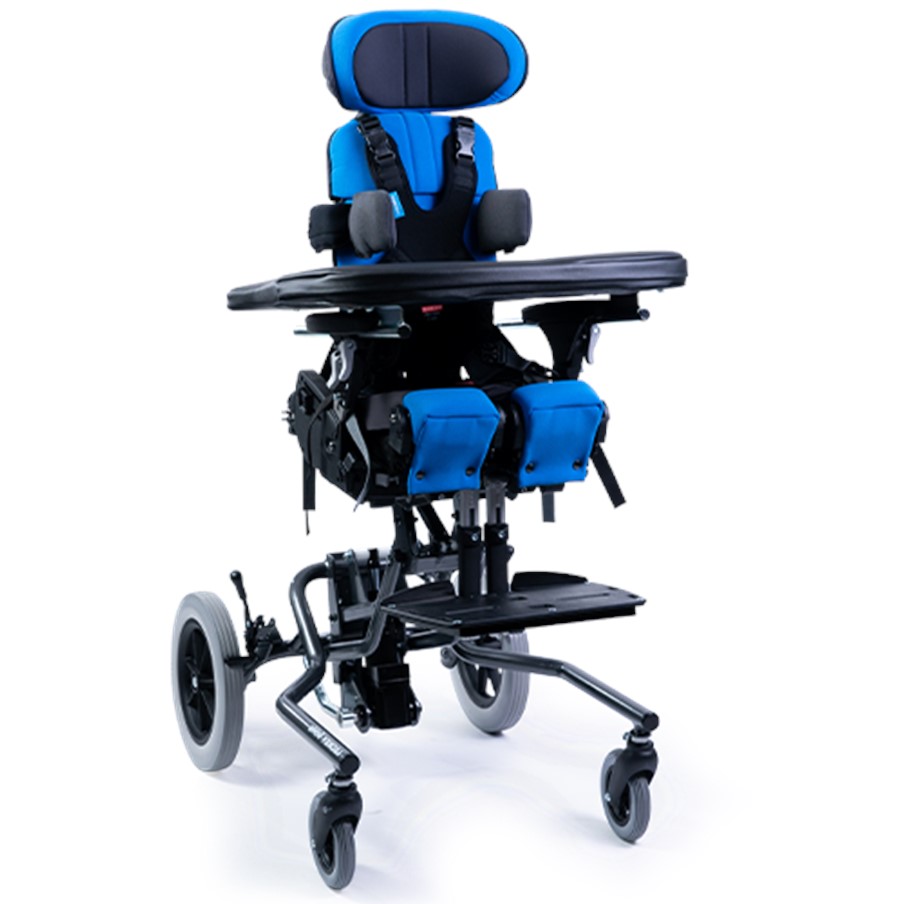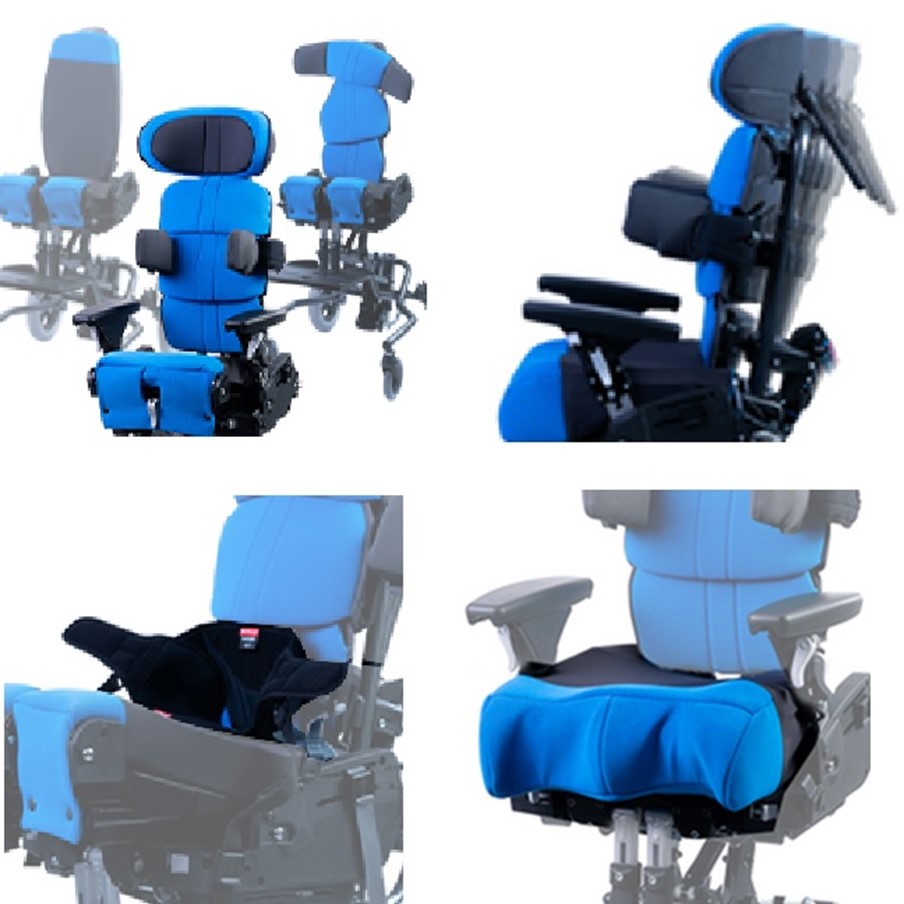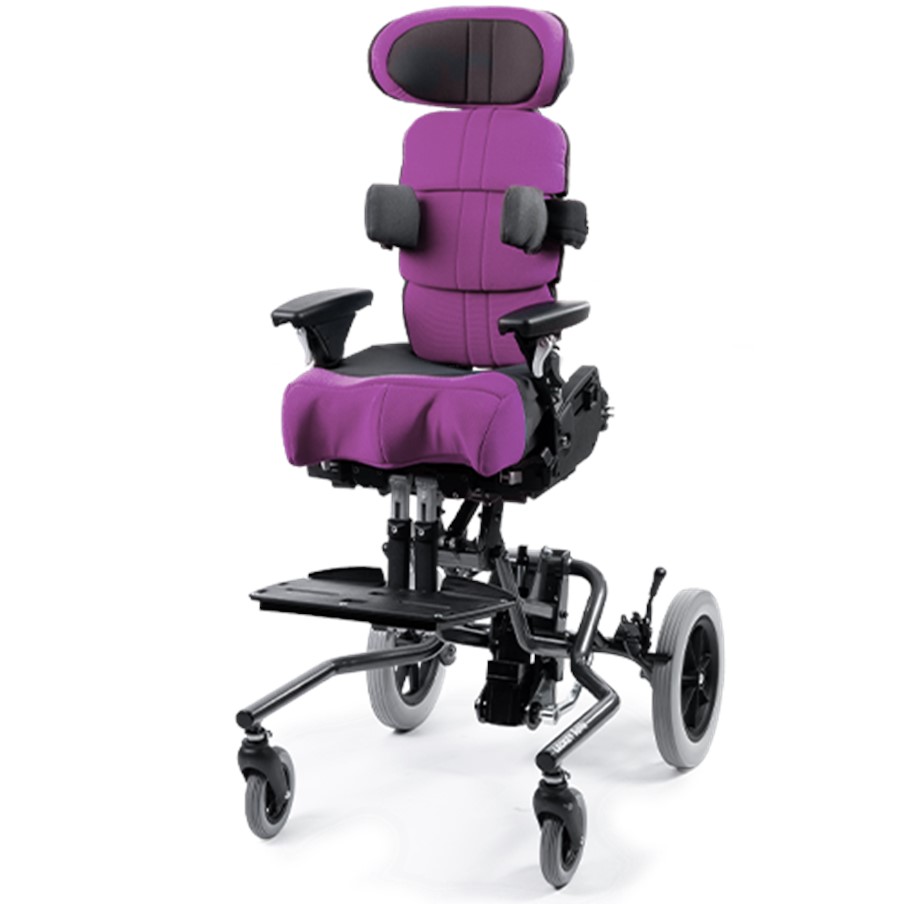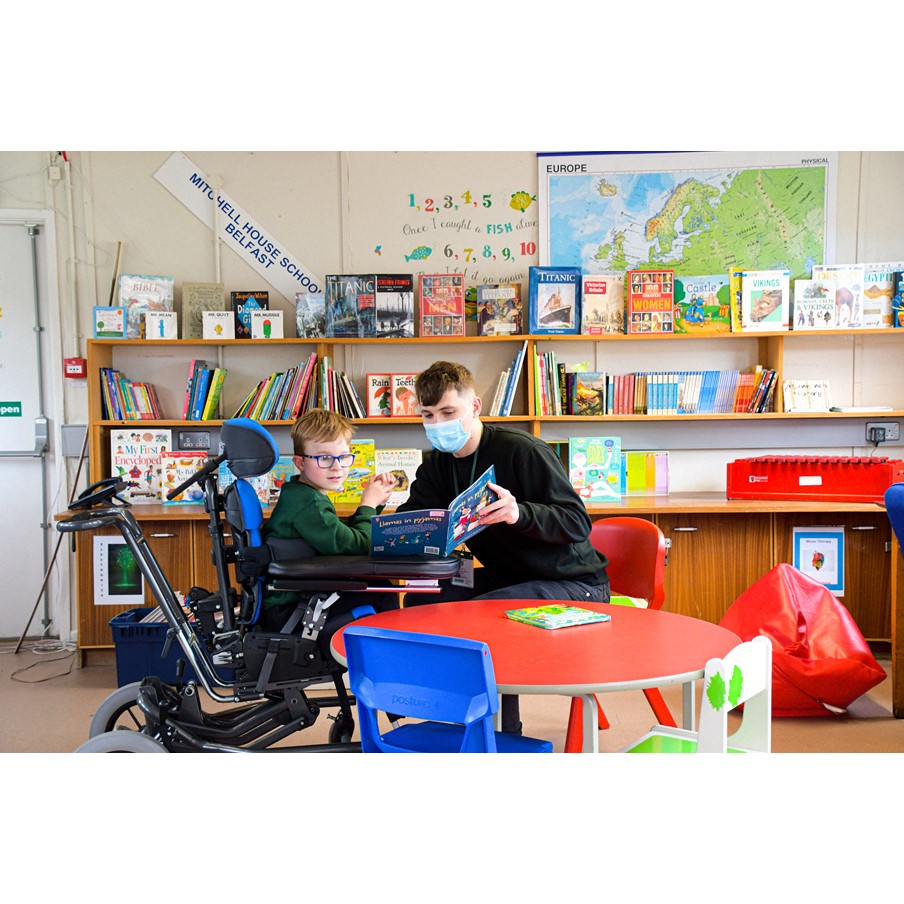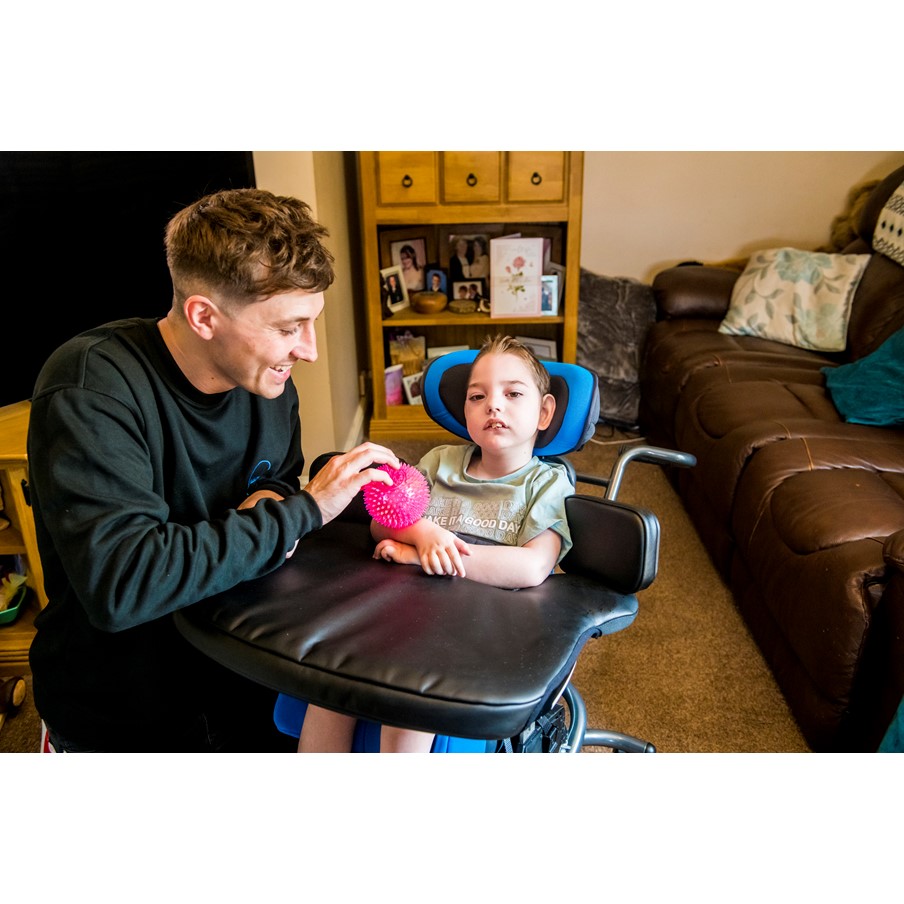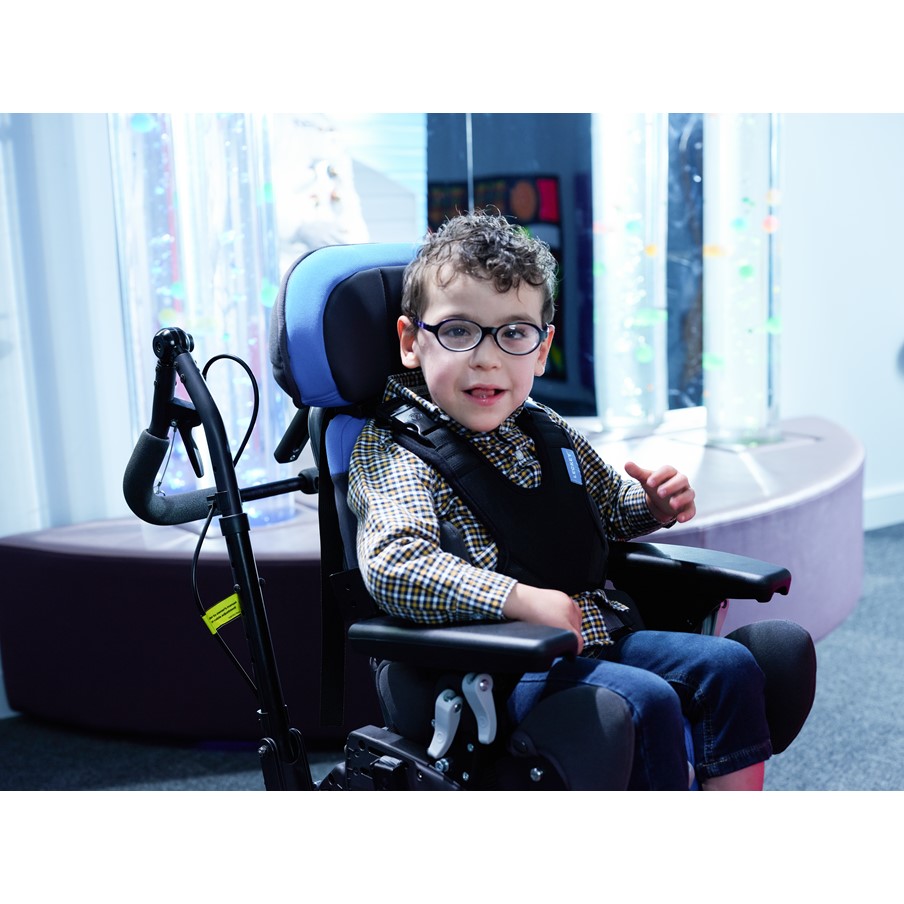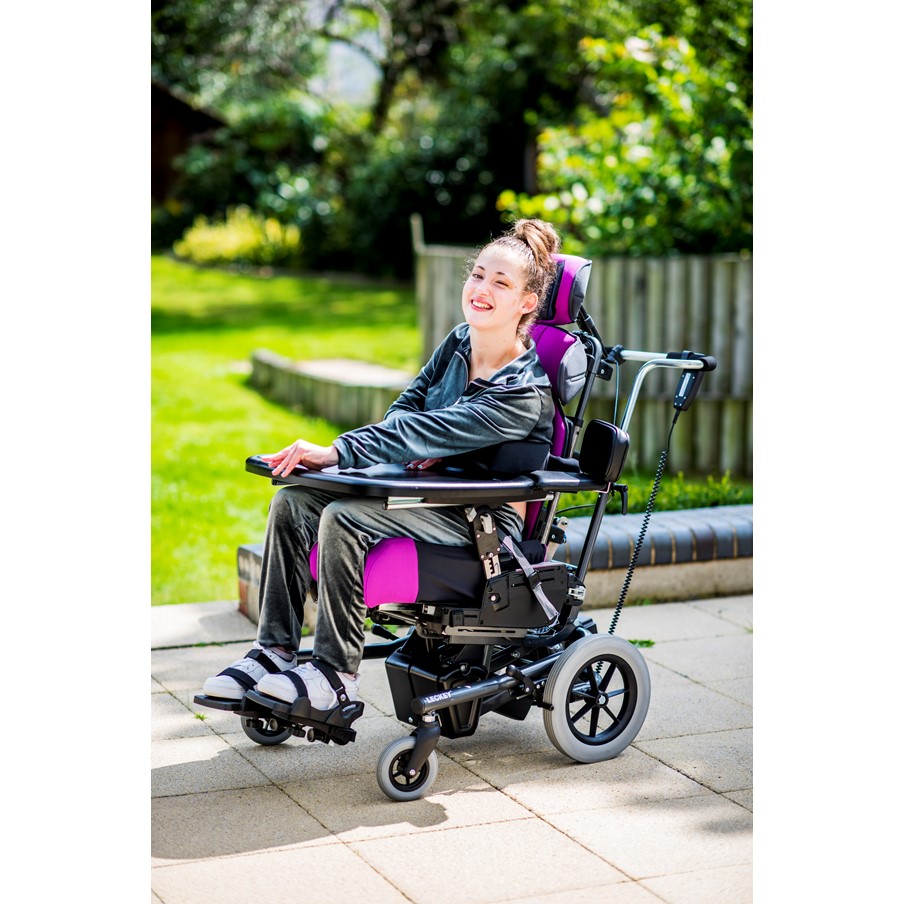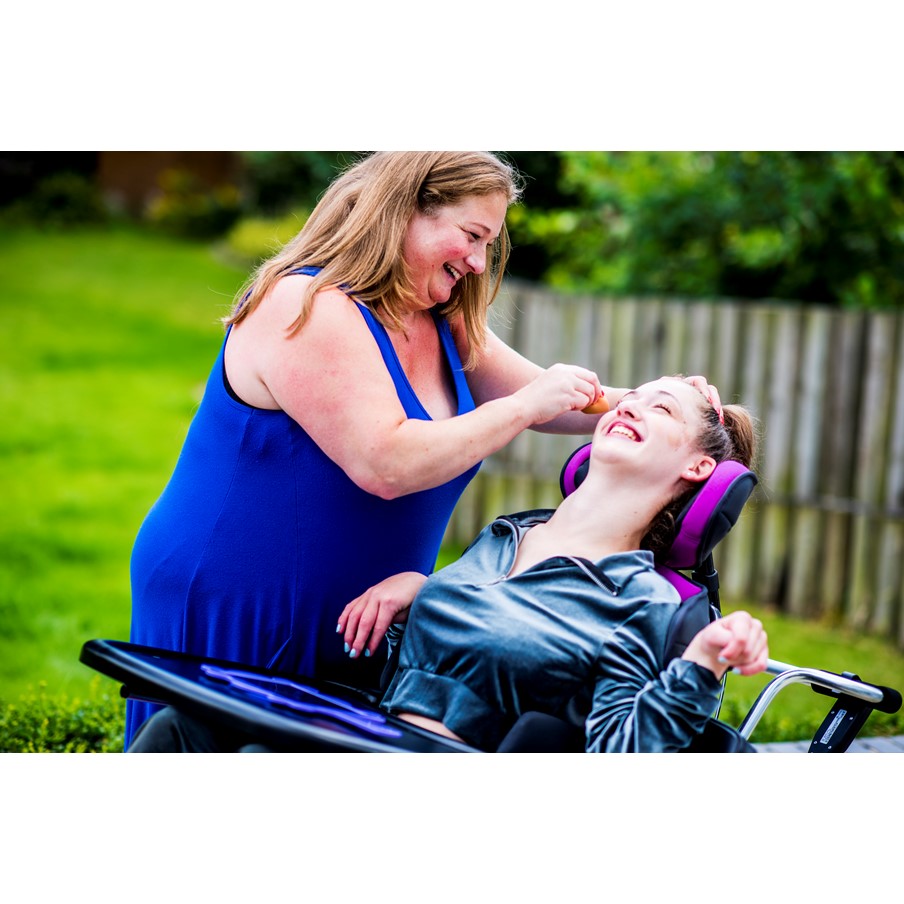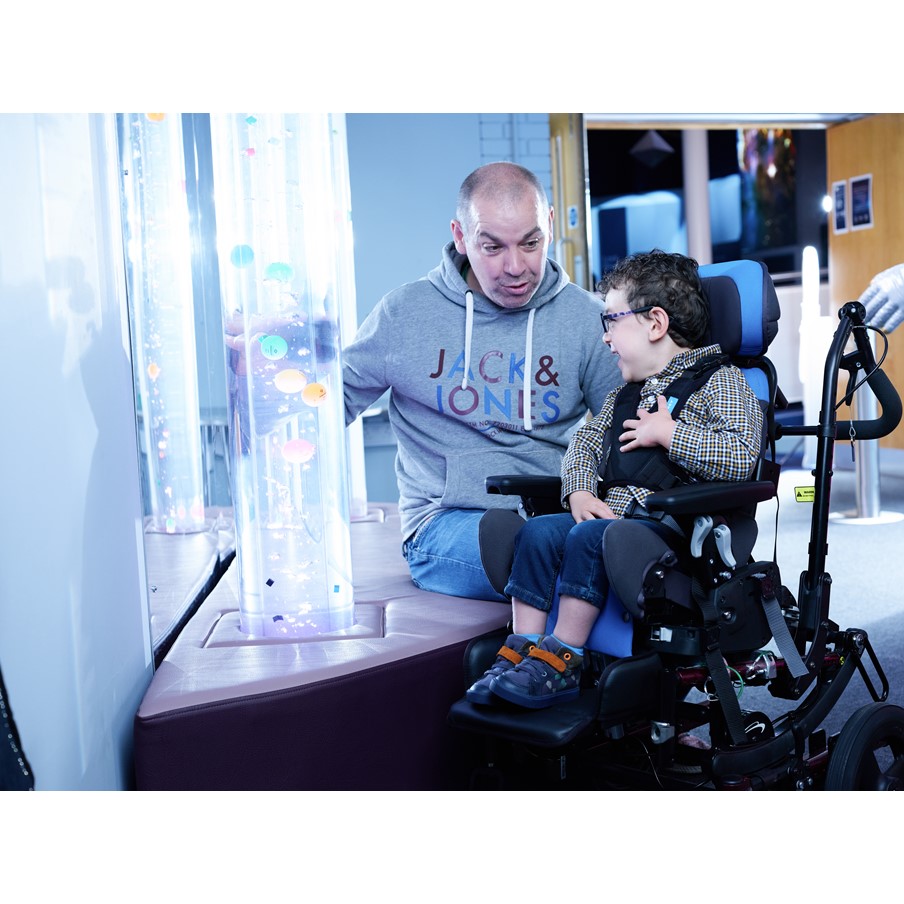Leckey BeMe
The infinitely configurable BeMe from Leckey, is a revolutionary seating system that puts a child’s development and independence at the heart of its design. Building on decades of Leckey clinical and design expertise and responding to detailed feedback from therapists and carers, BeMe is a highly personalised seating system available in three sizes and spec’d to perfection.
This product is not available in your selected combination
Product Code: {{stockCode}}
Please note the selected product option is not available for trial.
BeMe is designed to suit every need with its choice of three seat options: contoured, basic and split, three back supports: basic, moderate and complex and its vast range of accessories. Regardless of age, size or complexity, BeMe has the perfect match. BeMe’s infinite configurability makes it simple to achieve the perfect fit for each child, regardless of need or complexity.
What we love about the Leckey BeMe
Configurability
BeMe’s infinite configurability makes it simple to achieve the perfect fit for each child, regardless of need or complexity. At the heart of BeMe, is the seat core, from which a range of interchangeable parts (including seats, back supports, medial, lateral, proximal and distal supports) can be quickly and easily fitted. Every part is available in different sizes and complexities and can be used on any size of BeMe.
It’s surprisingly simple to find the perfect fit with BeMe as it's cleverly designed so that you can configure the right support quickly and easily.
Configuring BeMe is a snap as parts can be easily and intuitively interchanged. Clinical adjustments, including seat depth and back height, can be
made while the child is seated and armrests, femoral guides and pommels can be quickly released making transfers easier than ever.
Growable Cushion
BeMe’s genuinely growable cushion, with high-stretch foam and fabric, is contoured to maximise pelvic stability and comfort as the child grows and develops. This breakthrough in support technology envelopes the child for immersive, comfortable positioning, improving pressure distribution and enhancing function.
By reducing the need for hardware like pommels, and hip guides, BeMe allows the child to take centre stage without compromising support.
Helping Children Shine
BeMe’s child-centred ethos promotes practicality and function in day-to-day activities such as. playing, eating and learning, to encourage confidence, independence and inclusivity.
Promoting inclusivity in all day-today activities through good posture, BeMe encourages confidence and independence - empowering a child’s beaming smile to shine through.
Click here to watch a full Leckey BeMe Tutorial.
Additional Specs
| Product Size | Small | Medium | Large | Medium Long | Large Long |
| Product | |||||
| Seat Width Maximum (No Hip Guides) | 275mm | 325mm | 415mm | 325mm | 415mm |
| Seat Width Minimum (Contoured) | 250mm | 300mm | 400mm | 300mm | 400mm |
| Femoral Width on Split Seat | N/A | 90mm - 125mm | 110mm - 160mm | 90mm - 125mm | 110mm - 160mm |
| Backrest | |||||
| Back Height with Contoured Seat | 370mm - 480mm | 400mm - 530mm | 475mm - 625mm | NA | NA |
| Hip Guide Width | 165mm - 230mm | 200mm - 260mm | 250mm - 350mm | NA | NA |
| Footrest | |||||
| Lower Leg length with Basic/Split Seat | 185mm - 285mm | 280mm - 450mm | 290mm - 510mm | NA | NA |
| Lower Leg length with Contoured Seat | 185mm - 285mm | 290mm - 460mm | 300mm - 520mm | NA | NA |
| Maximum Dorsiflexion/Plantarflexion | +/- 10 degrees | +/- 10 degrees | +/- 10 degrees | NA | NA |
- The ultimate level of tailored support to suit individual needs.
- World’s first truly growable contoured cushion with high-stretch foam and fabric, to maximise pelvic stability as the child grows and develops.
- Spec’d to perfection to provide individualised posture, function and comfort without compromise.
- Interchangeable parts (including seats, back supports, medial, lateral, proximal and distal supports), click and switch with total ease.
- The dynamic backrest is air pressure controlled which regulates resistance as the child extends and is speed adjustable.
- Patented pelvic cradle provides unsurpassed pelvic control.
- Slim-line laterals.
- Available for trial in blue. Other colours may be available for purchase by special request.
| Sizing | Small / Medium / Large / Medium Long / Large Long |
| Seat Depth | 170mm - 325mm / 300mm - 425mm / 360mm - 500mm / 350mm - 475mm / 410mm - 550mm |
| User Weight Limit | 35kg / 50kg / 70kg / 50kg / 70kg |
| Backrest | |
| Back Height | 360mm - 470mm / 390mm - 520mm/ 500mm - 650mm / NA / NA |
| Width Between Chest Laterals | 130mm - 230mm / 200mm - 300mm / 225mm - 350mm / NA / NA |
| Backrest Angle | +10 to -25 / +10 to -25 / +10 to -25 / NA / NA |
| User Weight Limit | 35kg / 50kg / 70kg / NA / NA |
What needs to be considered when selecting a standing frame for a child?
Standing frames are designed for children who are spending most of their days in a wheelchair or buggie and assist in fulfilling their mobility and standing needs. Your child’s therapist will work with you to determine what your child needs and what the goals will be for them when using a standing frame.
Some things that you might like to consider are:
- How easy is it for my child to transfer into it?
- What position will work best for them – to be on their front (prone), on their back (supine), upright or a combination of these?
- Can the angle easily be adjusted when they are in it?
- How much growth is there for them?
- Is it able to be transported so we can bring it home from school in the weekends and/or holidays?
There are several main types of Standers:
- Dynamic/Multi-position – enables children with conditions such as cerebral palsy and muscular dystrophy, who are unable to stand and walk independently, to come into a safely supported upright position. They are able to switch from supine to prone or upright standing very quickly – without using any tools. They allow the child to be at eye level with their peers, helping to facilitate social interactions.
- Prone Standers – these are mobile standers (generally with four castors) that support the child at the front and offer a continuous range of angles so that the best position for the child can be achieved. They encourage weight-bearing and assist children in gaining the ability to stand.
- Supine Standers – also mobile, these standers work well for children who don’t have the strength or ability to lift or control their head and shoulders. This style allows for partial weight bearing and helps the child develop better control of their head, trunk, pelvis, knees and feet. It also leaves the child’s hands free to access items on a tray or table in front of them.
- Vertical standers – like the name indicates, holds the child upright. It is suited to children who are not confident on their feet or are developing lateral weight shifting skills. These work well to develop trunk strength and also promote independent, upright standing.
Why is standing important?
There are lots of ways that children with disabilities benefit from standing including the following:
- increases bone density and reduces the risk of fractures
- stretches muscles, preventing the onset of contractures
- improves respiration and voice control
- enhances circulation and blood pressure
- aids digestion, bowel function and bladder drainage
- facilitates the formation of the hip joint in early development
- improves skin integrity by relieving pressure encountered during sitting
- improves wellbeing, alertness and sleep patterns
My child needs more support when toileting - what are the options?
Essentially there are two different types of toileting options for children with disabilities – either stand alone commode style toileting systems or ones that can be attached to a regular toilet.
The commode style is generally easy to move and can be easier for children to transfer on and off. Many of these can also be used as a shower chair and are really easy for carers to use. They can be placed over the toilet or a removable commode bucket can be used.
Toilet support systems attach easily to a regular toilet. They are adjustable, secure and provide good positioning while the child is using the toilet. They help encourage independence and as many have padded seat options, ensure that the child is comfortable especially if it takes longer than usual.
Can we trial the wheelchairs shown on this website?
Yes - all that is needed is a trial request to come through from a therapist to start the process. Once the trial request has been received, with the specifications required, we will send the wheelchair out to the therapist ready to trial for at least one week.
Can we trial other pieces of equipment shown on this website?
Yes - all we need is a trial request to come through from a therapist that you are working with. Once we have this and the specifications you require, we will send the equipment out to the therapist and they will have it for you to trial for at least one week.
Any of the Toileting or Bathing items are issued for trial on the basis of "Dry Trial". This means that the item can be set up on the toilet or in the bath but not actually used with water. Many people use our trial equipment and we need to ensure that it stays in a clean and safe condition.
There are lots of wheelchair and buggie options – where do I start?
Good question – and one that we know your child’s therapist will help you with. However, we know that lots of parents and carers like to do their homework, so here are a few things to consider when looking at mobility options for your child:
How much support do they offer? Seating supports are often incorporated into buggies and wheelchairs to ensure that kids have good postural support and are also really comfortable.
Rear facing or front facing? Like regular buggies, it is good to have the option for your child to be facing you, which allows you to keep a close eye on them.
What is the overall size? The actually width of the buggie or wheelchair is important as you want it to easily fit through doors and let you go to the places that are part of your life.
How much do they weigh? Depending on the age of your child, it is likely that you will be transferring them into a car seat when you go out and will need to lift it into your vehicle. Looking after your body is really important too.
How easily do they fold up? How small do they go? Think about the space you have in your vehicle and also that you made need to do this several times a day – and in the pouring rain sometimes too!
Is there a storage compartment? A small thing that makes a big difference – a place to put spare clothes, food and nappies is important. If a storage compartment or bag is not standard, then check to see if there is an easy way for a baby bag to be attached.
What are the options if I need to also transport other children? Some buggies have the option of adding on a buggie board that older children can stand on, while others have the option of having mounting brackets added for a baby capsule. If this is something that you will need, make sure you discuss the options with your therapist.
And of course, kids grow so you need to consider one that has a good amount of growth incorporated in it – it’s better to start with one that is a little on the large side, than one that is a little snug. It’s quite the process to get equipment funded so you ideally want it to last as long as possible.
Once we decide upon the wheelchair our child is going to use, how long will we need to wait until we receive it?
Once the funding comes through, standard wheelchairs like the Karma Flexx Junior Paediatric wheelchair is generally held in stock and delivery to the therapist will be within 2 - 3 days. If the wheelchair is going to be custom made, it might take up to six weeks from the time we receive the order from the funder until it is delivered to the therapist.
LK150-2601 - Leckey BeMe - Brochure
LK150-2601 - Leckey BeMe - Measurement Guide
LK150-2601 - Leckey BeMe - Clinical Workbook
LK150-2601 - Leckey BeMe - Set Up Guide Contoured Cushion
LK150-2601 - Leckey BeMe - Technical Sizing Document
LK150-2601 - Leckey BeMe - Case Study Charlie
LK150-2601 - Leckey BeMe - Case Study Grace
LK150-2601 - Leckey BeMe - Case Study Imteyaz
LK150-2601 - Leckey BeMe - User Manual
Beme Manual Wheelchair Interface Instructions
